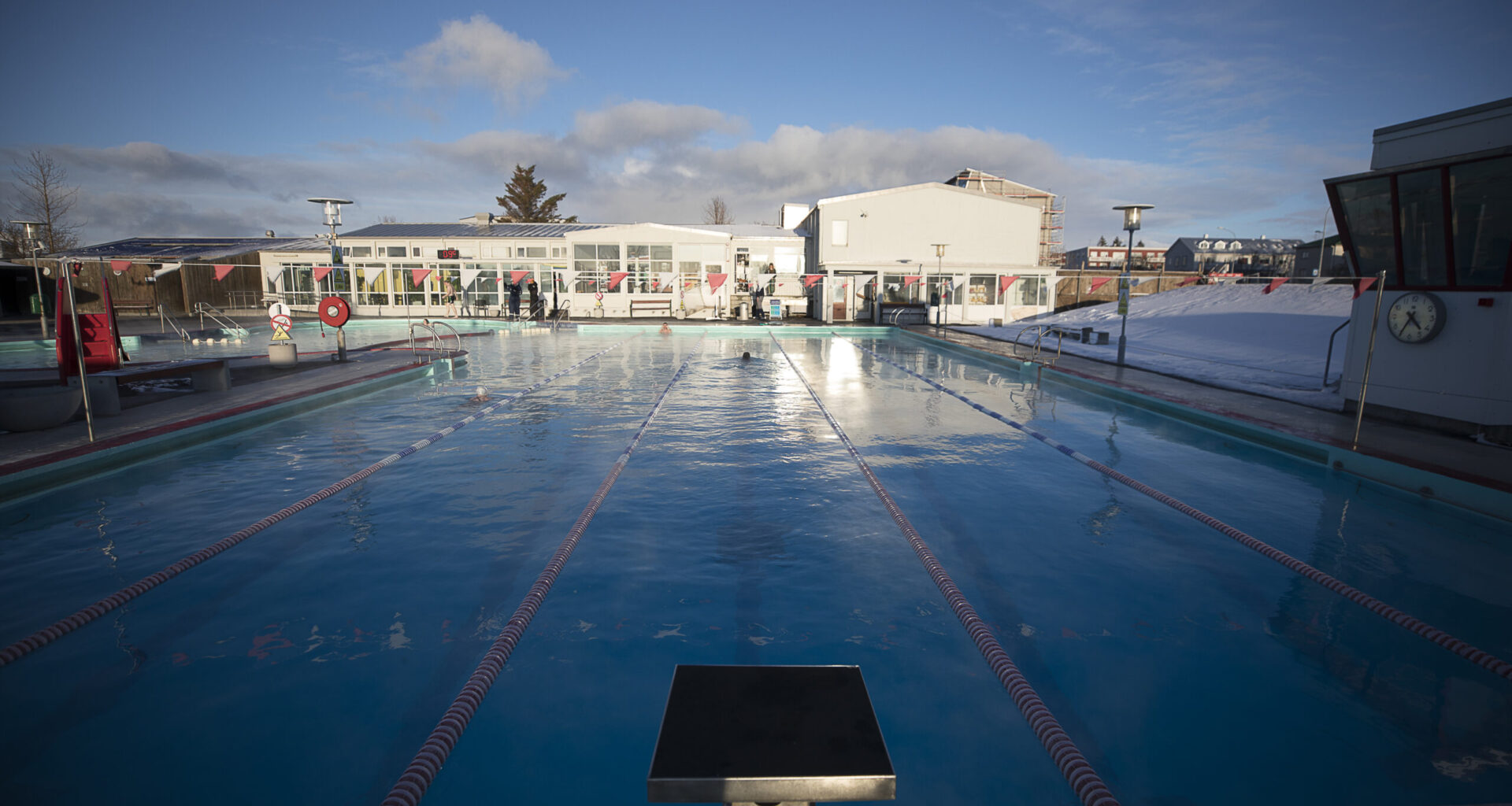The separate worlds of pools and lagoons
As far as these things go, Iceland is a great country in which to immerse yourself in water. Across the island, there are 120 local municipal swimming pools. Then there is the smattering of the fancier, upscale pools and spa “experiences” that dot the country. They have names like Blue Lagoon, Forest Lagoon, Sky Lagoon, Hvammsvík Hot Springs, Vök Baths, Mývatn Nature Baths, and, uh, GeoSea.
Tourists can be forgiven for thinking that the local culture revolves around these nature and forest baths, springs and lagoons, GeoSeas. They tend not to have even heard of pools such as Vesturbæjarlaug, as they don’t have internationally friendly names or a marketing budget. In fact, the people who operate pools like Vesturbæjarlaug don’t really care if you come or not.
But that’s where the locals go: to the stolid, social-democratic, child-friendly, public-health-improving pool. Where the wall posters urge you to drink water, to eat a balanced diet full of vegetables, to know the early signs of testicular cancer, to be aware of exactly how many sugar cubes are in 500ml of Coke.
Life at the pool
Each morning, at municipal pools across the country, old men and women embark on the long, wind-chilled walk from the showers to the outdoor hot tubs. They restart the intermittent conversation that these hot tubs have hosted since their installation: complaints about the council, updates on grandchildren’s studies, dodgy stock tips, bulletproof ideas for what the government should be doing about the roads — if they only had some sense. Nowhere does the Icelandic windbag bellow with more vigour than in the hot tub, and nowhere is he more warmly welcome, for there are no phones, and there is nothing else to do but boil and listen contentedly.
As the various shifts end, working people arrive and collapse into the hot tubs and paddling pools, alone or with their children, who will make good use of the water slide. People stop to chat with acquaintances. Some energetic souls will actually swim a few laps. Small groups of gangly teenagers whittle away their endless time. All this, multiplied across a hundred pools, is repeated daily across the island.
“Each morning, at municipal pools across the country, old men and women embark on the long, wind-chilled walk from the showers to the outdoor hot tubs.”
Initially, the pools served a more practical purpose. In 1805, only six people in Iceland knew how to swim, a problem for a country that relied on fishing for its livelihood. In 1909, nine sailors drowned in the landing at Hellissandur — just a few metres from shore — as none of them knew how to swim.
To put an end to these tragedies, pools were eventually built across the country with the goal of teaching the next generation how to swim. With fish bringing in the country’s money, the pools represented an investment in manpower. This is why, on schooldays, children will come bursting out of the showers and run and scream their way to the heated swimming pool, where they will swim their requisite laps. Something Icelandic children have done since the 1940s.
Lagoons & nature baths
The lagoons spring from a separate tradition: that of the upscale spa. The changing rooms are black, the international colour of luxury. In some lagoons you can pay extra for private changing rooms. In most baths you can buy thick plastic glasses of beer and rosé without even getting out of the lagoon. Fully dressed staff stand at eye level behind a sunken bar and hand you the drinks through a serving window. It’s a little unsettling and surreal, going through this pool drive-through, but well worth the results.
At the Blue Lagoon, staff patrol the banks and offer to take pictures of you in the water. This is anarchical when compared to the strict regime of the swimming pool, where phones and photography are simply banned and alcohol is unimaginable. When you finally crawl out of the water, like a Late Devonian tetrapod, and shed your layer of silica, a world-class restaurant awaits, staffed by well-educated and optimally drugged chefs. If you can’t bear to leave, there is always the five-star hotel.
By these and other means the Blue Lagoon generates more than 100 million euros in yearly revenue and keeps more than 600 people busy. This is the point of all these baths and lagoons and pools. When fish was the main export we built pools for the future workforce. When the tourist boom started the lagoons proved to be a more direct approach to getting rich: place the tourists in the water; ply them with wine and skincare.
Freyr Thorvaldsson also writes an online newsletter full of personal essays and book reviews. Find it at freyr.substack.com.
In this same issue, we published contributor John Rogers’ article titled “Changing Tides In Bathing Culture,” which makes the case for enjoying the benefits of newer, pool-inspired lagoons and spas.
